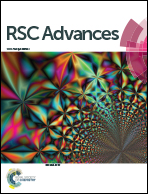Hydrothermal synthesis of montmorillonite/hydrochar nanocomposites and application for 17β-estradiol and 17α-ethynylestradiol removal
Abstract
With a view to reducing estrogens pollution in aqueous environments, montmorillonite/hydrochar (MMT/HC) with or without modification by KOH via hydrothermal carbonization process (HTC) were applied to remove 17β-estradiol (E2) and 17α-ethynylestradiol (EE2). The characterizations of MMT/HC indicated that MMT had been successfully attached onto HC surface, which could cause an improvement in the stability of the clay nanoparticles. MMT/HC with 1% KOH (MMT/HC-K1) exhibited excellent adsorption ability (E2: Qm = 138 mg g−1, EE2: Qm = 69 mg g−1) compared to those of other adsorbents; approximately 2-fold higher than that of HC. Moreover, the adsorption capacity maintained a high level over a wide pH range (2–8). The pseudo-second-order model and Freundlich model exhibited prior fitting performance for adsorption of E2 and EE2. The regenerated MMT/HC-K1 retained over 80% of its initial capacity after four cycles. The adsorption mechanism on MMT/HC-K1 could be explained by hydrophobicity, π–π bond, electrostatic interaction and H-bonding interaction. Overall, MMT/HC-K1 synthesis from two low-cost materials, could be considered as a competitive adsorbent for estrogens removal from aqueous environment, considering its high adsorption capacity and regeneration ability.



 Please wait while we load your content...
Please wait while we load your content...